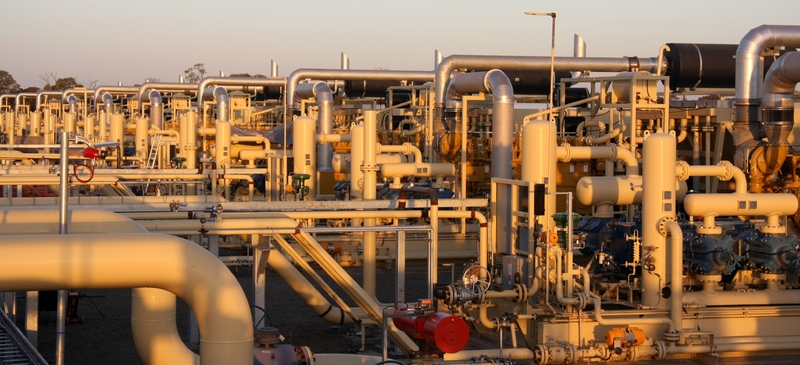
Gazprom’s uncertain outlook
by Katinka Barysch
Many people in the EU tend to see Gazprom as a mighty giant that uses energy as a political tool on behalf of the Kremlin. They say that Russia has leverage because it controls 40 per cent of the EU’s gas imports. They fear that Gazprom may again cut gas flows to Ukraine this winter. They should think again. Realities on the international gas market have changed. Gazprom faces almost unprecedented uncertainty. It should therefore be keener on stable energy relations and co-operative customers. There may be an opening for a revived EU-Russia energy dialogue.
Gazprom’s energy strategy, and its political swagger, were predicated on the assumption that gas demand in the EU – by far the company’s most lucrative market – would continue growing. But in 2009, European gas demand fell for the first time ever. In the short term, this may even have suited Gazprom. Many analysts had warned that Russia may be unable to fulfil its export obligations from 2011 onwards because it does not invest enough in developing new gas fields in Yamal and Shtokman. Russia’s ability to supply is now more in line with gas demand.
In the medium term, however, the outlook for the gas market is foggy. For a company that must ponder multi-billion dollar investments to prevent an impending output decline, sits on a $40 billion debt pile and faces tougher competition, this is an uncomfortable position to be in.
The sluggish global economy will cap energy demand at a time when technology has opened up entirely new possibilities for producers. In 2009, output of so-called unconventional gas (gas coming from rock formations) in the US has risen so fast that the US has mothballed its LNG terminals. LNG tankers from Qatar started sailing to Europe instead. The additional supplies have depressed prices in the ‘spot’ market for short-term gas contracts. Spot gas became very cheap compared with piped gas from Russia or Algeria, which is tied to the oil price with a lag. European companies bought more supplies on the spot market and Gazprom lost out.
If the price gap persists, the big European companies, such as E.On, Gaz de France or ENI, will want to renegotiate their long-term ‘take or pay’ contracts with Gazprom. Russia, so far, wants none of it. If the Europeans buy less than the minimum amount fixed in these agreements, Gazprom can charge them a fine. But if spot prices are sufficiently low, that may still make business sense.
It is not only slow global growth and new technology that are causing uncertainty for Gazprom. So are the EU’s climate change targets and its emerging diversification strategy.
The gas industry argues, somewhat optimistically, that tougher CO2 targets will play in its favour as EU countries are forced to shut down polluting coal plants. Energy experts are not so sure. If the EU is to achieve both its target to increase energy efficiency (by 20 per cent by 2020) and boost the share of renewables to 20 per cent, the role of gas in the energy mix will have to shrink. At the same time, the Europeans are debating how to diversify their gas supplies away from Russia, to minimise the risk of further gas crises like the ones in 2006 and 2009. Many in Europe ridicule the EU-backed Nabucco pipeline as a pipe dream. But Gazprom has taken it sufficiently seriously to move ahead with its €20 billion South Stream pipeline that would compete with Nabucco for both Caspian gas reserves and South East Europe’s fast-growing energy markets. Austria is the latest country that appears to have switched sides from Nabucco to South Stream.
Pipeline competition, disputes over long-term contracts and uncertainty over both supply and demand make for an antagonistic energy relationship. Neither the EU nor Russia can want this.
The EU’s energy majors will want to wiggle out of their inflexible 30-year agreements but without endangering their working relationship with Gazprom. Some of them have upstream interests in the exploitation of Russian oil and gas fields. Some are involved in multi-billion euro joint pipeline projects with Russia. Long-term contracts will remain important for EU-Russia energy ties, but perhaps without the outdated practice of linking gas prices to those of oil.
Pipeline competition is souring the political climate in Europe. The EU and Russia should discuss whether Nabucco and South Stream might be merged. Russia will need western capital and know-how to develop difficult new gas fields. The EU wants Russia to sign up to joint principles on energy sector investment and transit, especially after Moscow recently withdrew its signature from the Energy Charter Treaty. Russia seeks European help to make its hugely wasteful industrial and power sectors more energy efficient. The EU wants Moscow to adopt greener policies.
These issues, and plenty more, could fill a reinvigorated EU-Russia energy dialogue with substance. Gazprom’s weakened position may bring Moscow to the negotiating table in a more compromising and constructive mood. Progress on energy co-operation could help dissolve the gridlock in EU-Russia relations.
Katinka Barysch is deputy director of the Centre for European Reform.
